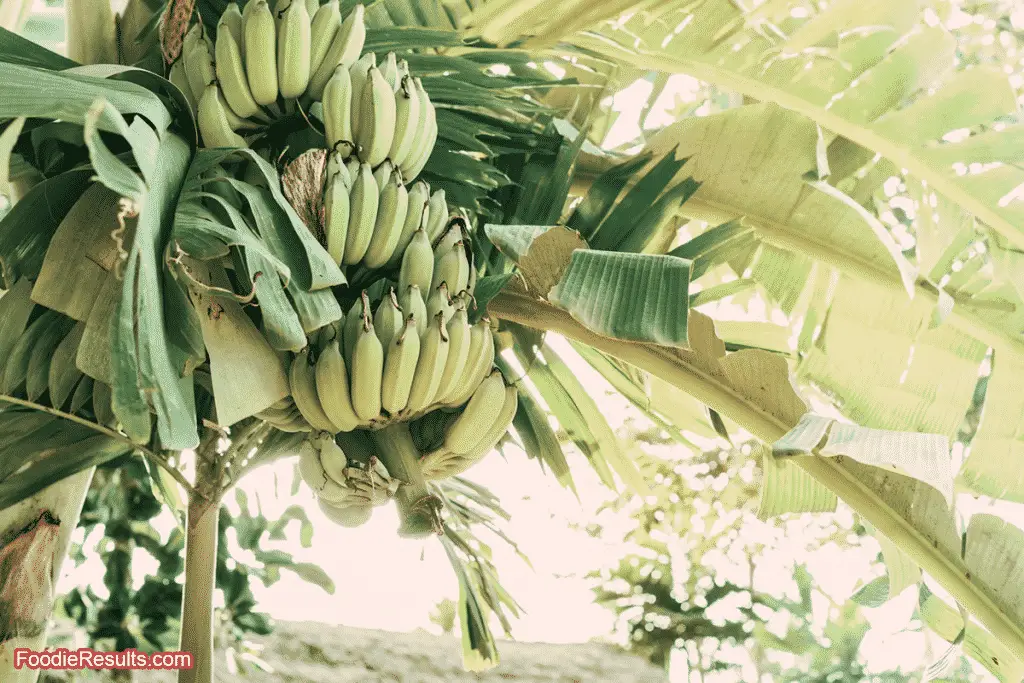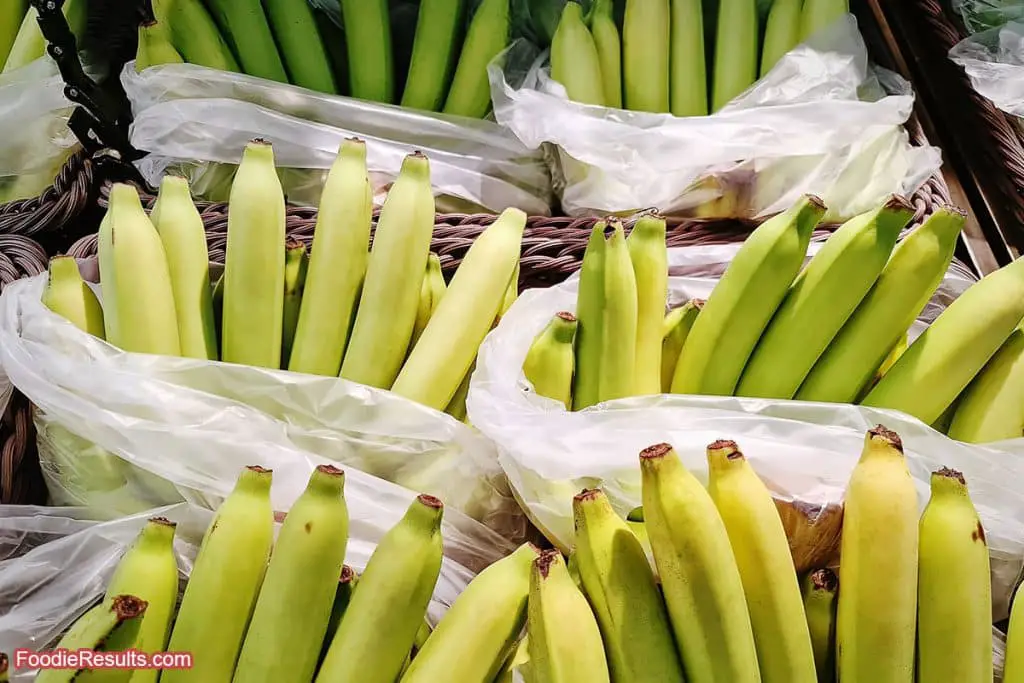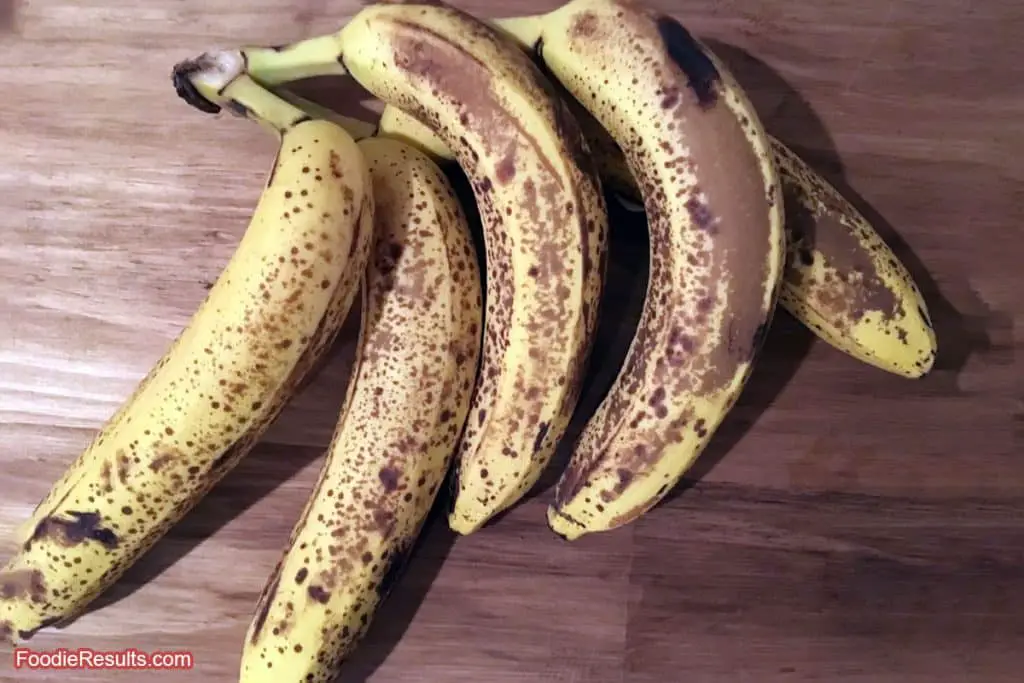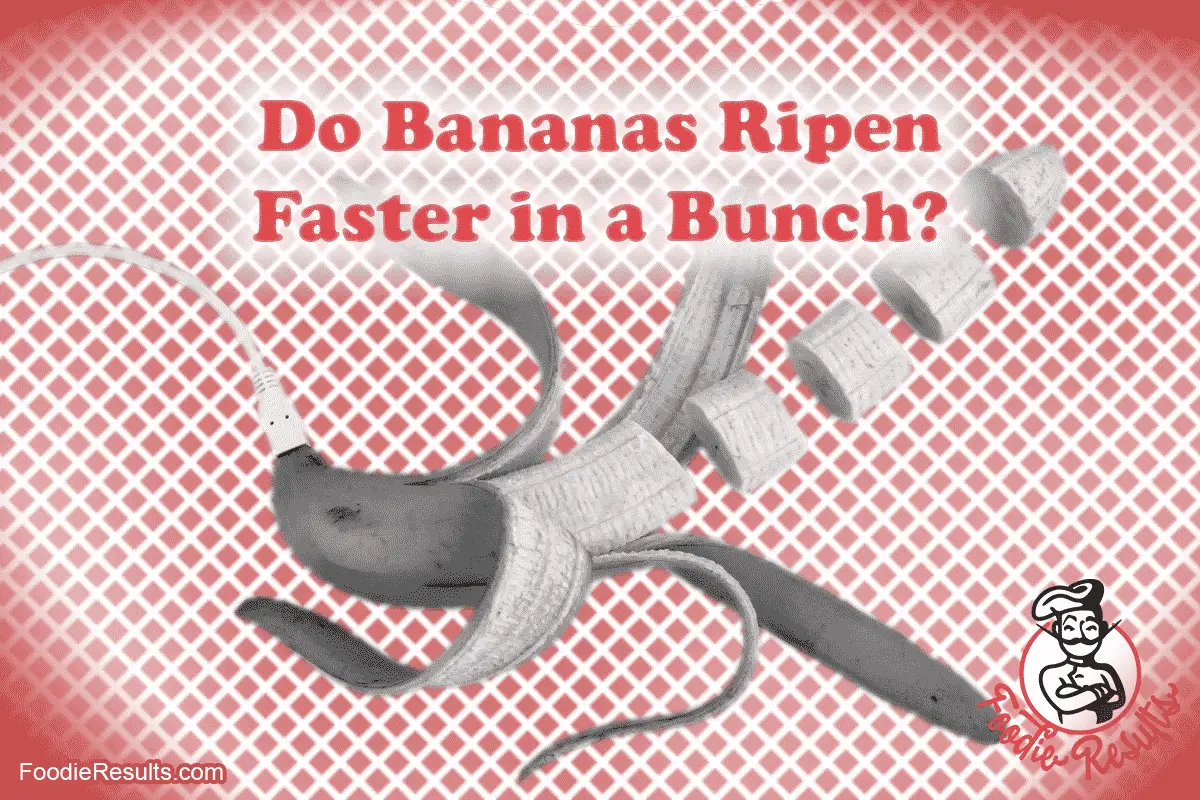Anyone making banana bread will want to know how to get their bananas to ripen faster getting them to the right sweetness for the perfect bread. But how can you make it happen faster? One idea is to leave them in a bunch. However, in our other article about bunches, we learned that you are not likely to have a true bunch around, but you still might wonder if bananas ripen faster when kept together.
Answer: Bananas, as they ripen, produce ethylene gas that helps them go from green to yellow fruit. When separated, Bananas lose the accumulation of ethylene gas. This loss makes them ripen more slowly than it takes when they are in a bunch.
Numerous experiments to verify this fact of banana ripeness produced the same results. Experimenters found that cutting the bananas from the bunch doesn’t significantly change the ripening process if the bananas remain in the same general area after separation.
Fruits such as bananas release ethylene gas into the air, which causes each other to ripen faster. Since there is less space between bananas in a bunch, the gas is more concentrated.
If ethylene gas is an exciting subject or you want to learn more about the banana ripening process, keep reading below.

What is the Function of Ethylene in Ripening Bananas?
Ethylene gas production lessens when bananas are nearing the fully ripened form. The ethylene production is at its climax during the unripe stage and then gradually reduces as bananas ripen. Ethylene mixes with the air; then accumulates to ripen other bananas.
Bananas release ethylene gases more through cuts and bruises found on the fruit or stems of the bunch. Ethylene also helps other fruits ripen faster; putting bananas next to other fruits makes them ripen. Ethylene gas (C2H4) is a powerful plant hormone that controls the function of the cells inside the fruit, forcing the ripening process to happen.
Other fruits like pears and melons are susceptible to ethylene; this is why you might notice these fruits ripen quicker when you put them next to each other.

Does Covering the End of a Banana Slow Its Ripening?
Covering the end of the banana stem lessens the production and release of ethylene gas; therefore, it will slow down the ripening process. But the difference between the time it took from harvest till the time you cover that part of the banana is so insignificant that you may not see a difference.
Ethylene usually comes out from those cuts and ends; then, it will mix with the surrounding air; covering just the jut ends (read as any exposed bits) will stop this gas’s release, isolating the banana from this powerful hormone.
Ethylene gas helps ripen the bananas in the shortest possible time. You could use it to your advantage by covering and putting the bananas next to each other to make them ripen faster or spread them out to make them ripen slower.
How Many Does it Take for a Banana to Ripen?
Banana plants typically grow in tropical cultures, and these are one of the conditions needed to cultivate them. Banana needs to be mature enough before you cut them from the tree. Farmers wait for seventy-five days before cutting a bunch of bananas off the tree.
Farmers are cautious when cutting the stem from the tree to avoid bruising or cutting the bananas. Bruises on banana fruits attract pests and make them prone to more damage. Farmers hang these bunches in a safe and ventilated area and wait 3-4 days for the fruits to ripen.

Banana fruits start from green to yellow with green tips, followed by yellow, yellow with brown spots, and black. Bananas usually take 3-4 days to complete this process and fully ripen. But as we have already found, we can manipulate this just a bit.
Bananas also need the right temperature to ripen. In stores, bananas are put in a room under 60 Fahrenheit to slow their ripening process. They need to slow the ripening process to ensure that it will not be over-ripened when it arrives on the market. Humidity also helps ripen bananas. A humidity level of 90 percent is the condition where the bananas ripen best.
Bananas usually ripen in warm or tropical temperatures. As the temperature goes down, the ripening process slows down; that is why putting your bananas inside the refrigerator prolongs their life.
To learn more about bananas in general, check our other article: How Many Bananas in a Bunch? (opens in a new tab)
Sources:
https://www.ncbi.nlm.nih.gov/pmc/articles/PMC4730734/
www.sciencefocus.com/nature/why-do-bananas-make-fruit-ripen-faster/amp/


